Cover
ERB Legend Bill Dickens – Bass Musician Magazine, December 2016 Issue
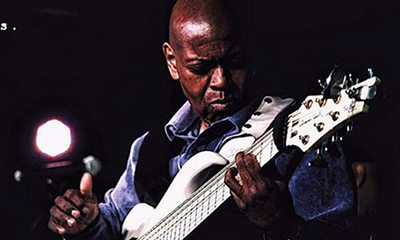

ERB Legend BILL DICKENS
After Anthony Jackson with the 6-string and Jimmy Johnson on the 5-string started in the mid 70’s, adding strings to the standard 4-string bass in the early 8o’s Bill “The Buddha” Dickens was one of the first bassists in the world to continue with that incipient trend. Later in the mid 90’s he invented the 9-string bass and for that reason, along with his spectacular technical skills on it, he has achieved a well-deserved reputation in the ERB field.
Please tell us about your musical background and that crucial moment when you decided to move into the ERB field.
It started back in the early 80’s when I was using Ken Smith basses. He used to loan me a different 4-string bass every time I visited New York, performing at Fat Tuesdays on tour with Ramsey Lewis. One time when performing I heard Anthony Jackson was playing at the old Brecker Brothers Club, 7th Avenue South with Steve Khan and Eye Witness. Anthony was playing his signature bass, the Smith Jackson Contrabass. I saw him play for 3 nights and I was totally blown away with what he could do with those 6-strings.
Ken came out to see me at Fat Tuesdays. When Ramsey gave me a solo I played, Willow Weep For Me, the song Ramsey usually played for his solos. It so moved Ken that he traded the bass I was borrowing for a very special bass. He actually wouldn’t let me peek at it until I was alone back in my hotel room although he said it cost $10,000.00.
When I unzipped the bag it was a 6-string. I was shocked and called him saying there’s no way I can afford this. He said he was so moved by my solo that he was giving it to me at a highly reduced price, because I deserved it.
I used that bass on the Classic Encounter album with the London Symphony featuring, Ramsey Lewis, myself and Frank Donaldson. So, Anthony and I were the first to make extended range basses popular. I still have one of the last contrabasses in existence.
ERB players deal with ‘haters’… what would you say to them?
The road hasn’t been easy; they may have slowed me down but they haven’t stopped me.
I broke thru many barriers by making guest appearances on major TV shows, recording on hit records for other people, being a recording artist for Ropeadope Records and filming, “I Am Your Keeper,” as a co-star with my ERB. And… let’s not forget, The Day The Bass Players Took Over The World video with, Victor Wooten, Oteil Burbridge, Steve Bailey and Dave Pomeroy.
In your opinion, what are the benefits and downsides of playing with an ERB?
The benefits are that, when playing with smaller bands and the guitarist takes a solo I am able to cover the chords. An ERB also enables me to cover lead parts with my band. The downside is that, although many guys play ERB’s they are still not the instrument of choice; most bassists still play 4 and 5-strings.
How do you take care of the string-muting and string-spacing issues?
I use a Gruv Gear Fret Wrap and have custom spacing on my Basses.
Tell us how your extended range bass has evolved through the years.
Here are some customizations that I have had done:
- I added front and back ramps between pickups. The front ramp is so my thumb won’t get stuck in the strings and the back ramp makes it easier to play with my fingers.
- 2 – 13 pin plugs connected to 2 Axon guitar synth modules.
- Custom electronics and pick-ups designed by, Bill Bartolini and myself for my signature bass by Conklin Groove Tools.
- I invented the 9-string bass with Bill Conklin.
- My basses have been sold everywhere from, Guitar Center to Sam Ash, Walmart to Amazon.

Photo, Lisa Baker
Tell us about the evolution your ERB playing technique has experienced through the years.
Everything I did on a 4-string I played on a 6. Then everything I played on a 6, I put on a 7 and everything I put on a 7, I played on a 9 – but, on lower and higher strings.
What do you think was the turning point in your career as a bassist and what do you consider your main contributions to the bass scene? In other words what do you consider your legacy?
I will be remembered for playing things people didn’t believe were humanly possible, like my five-finger technique, which can be very intense and is juxtaposed to the acoustic ballads I play and the strong groove lines.
What would you say to those young musicians who are considering at this moment going into the ERB world but are still not quite sure about doing so?
You should start with a 4-string, master that then progress consecutively adding one string at a time.
Please let us know about the specific elements of your gear.
This is what I have in my pedal board:
Pigtronix:
- Infinity Looper
- Echolution 2 Delay
- Infinity Foot Controller
- Echolution Foot Controller
- Gate Keeper
- War Hog Distortion
- Bass Envelope Filter
- Philosopher Bass Compressor
Mission Engineering: Expressionator Multi-Expression Controller
Eventide: H9
Morley: Cliff Burton Signature Fuzz Wah
Digitech: Whammy
Roland: Expression
I use various configurations of Aguilar Amps and Cabs – attached is a photo
Finally, what do you see as the possible evolution of our instrument?
The possibilities are endless. As long as kids keep an open mind about the Bass, our instrument will continue to evolve.
Visit online at www.billthebuddhadickens.com
Bass Videos
Brian Bromberg, Paying Tribute to Scott LaFaro – April 2024
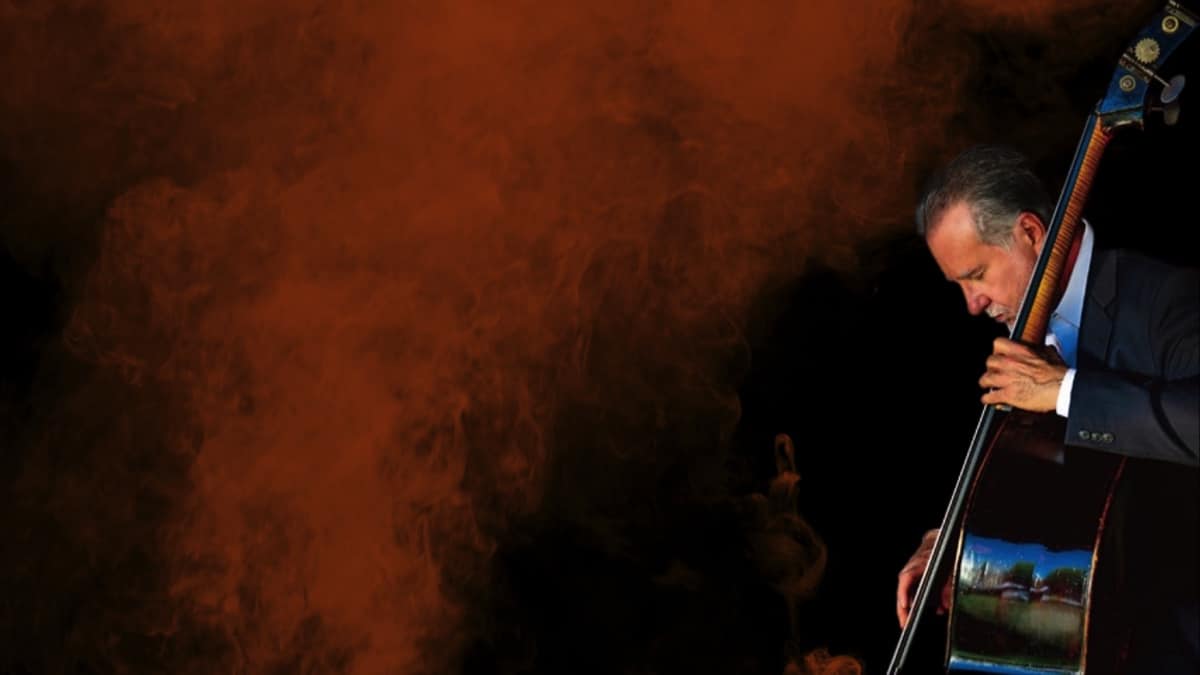
Brian Bromberg, Paying Tribute to Scott LaFaro, April 2024…

Brian Bromberg is one heavy-hitting bass player and I am in awe of his talent as one of the few individuals who is equally proficient on electric and upright bass.
You might remember our conversation back in 2018 when he released his powerhouse Funk album. Brian’s “A Little Driving Music” album is a staple on all our road trips and his Jaco and Jimi Hendrix tribute albums are mind-blowing… and I could go on and on.
Now, Brian has taken on the arduous task of producing an album paying tribute to the late, great, Scott LaFaro. He teamed up with pianist Tom Zink and drummer Charles Ruggiero and Brian delivers a commanding performance on upright. The entire album is a masterpiece and a real treat to listen to track after track.
Join us as Brian shares the details behind this project and more.
Photo, Michel Bocandé
Featured Videos
Visit Online
brianbromberg.net
FB @BrianBrombergBassist
YouTube
Cover
Leland Sklar, Over Half a Century of Bass, March 2024
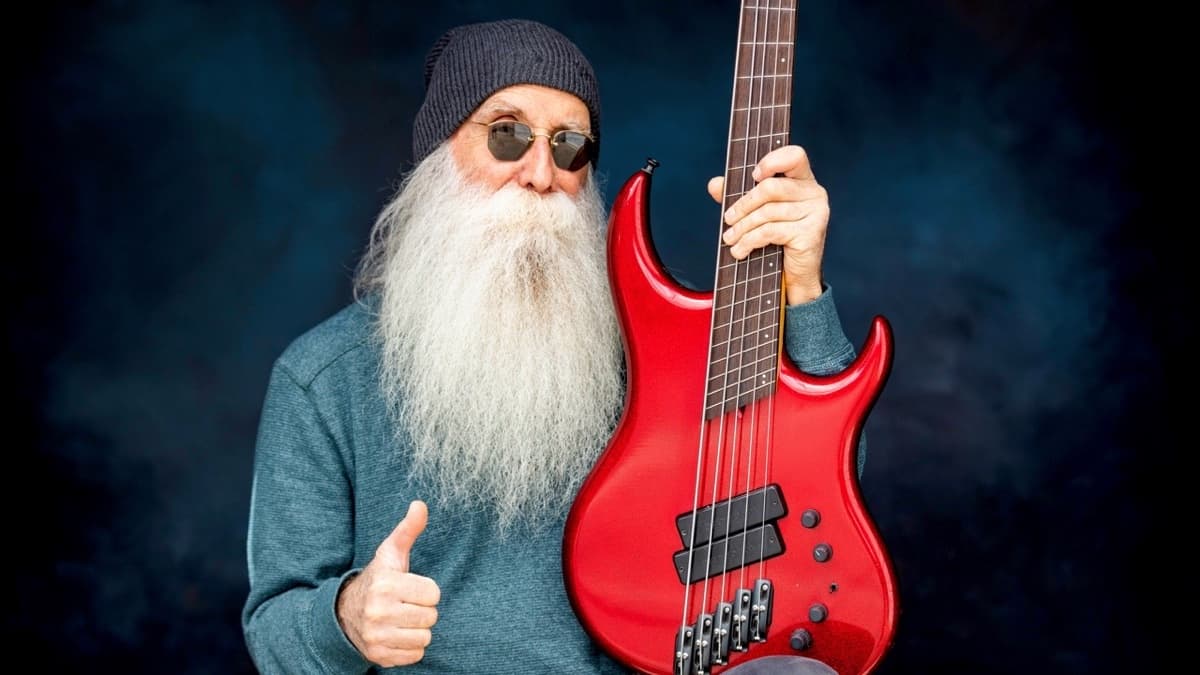
We all have enjoyed Leland Sklar’s Bass lines for over half a century.

You might remember that we had him on our cover back in 2017 and did an update when he launched his book “Everybody Loves Me” in 2020. It was exciting to hear that The Immediate Family had got back together in the studio to work on their own music in 2019 and are now up to two albums.
Just last December, Magnolia Pictures released a documentary titled “Immediate Family” where we got a behind-the-scenes look at the massive contributions Danny Kortchmar, Waddy Wachtel, Ross Kunckle, Leland Sklar and Steve Postell have made in countless songs that are the very essence of our daily personal musical soundtracks. Seeing the astronomical roster of performers they have supported over many years is very eye-opening. It is a must-see for any music lover!
Now, I am thrilled to bring you a special chat with Leland Sklar where we go more in-depth into the bass side of his musical journey.
Photos: Header, Rob Shanahan – Cover Photo, Jay Gilbert/Chris Schmitt
Featured Videos:
Skin In the Game – https://www.youtube.com/watch?v=QhbnzIrdjJ8
from new album Skin In The Game
The Toughest Girl In Town – https://www.youtube.com/watch?v=UVQLZIRfLjU
from new album Skin In The Game
Fair Warning – https://www.youtube.com/watch?v=1DN18DYwLsU –
from the self-titled album The Immediate Family
Visit Online
www.immediatefamilyband.com/
www.facebook.com/TheImmedFamily
www.instagram.com/theimmedfamily/
Bass Videos
Ricky Phillips, STYX Bass And More – February 2024

Ricky Phillips, STYX Bass And More…

I have always been a huge Styx fan. Their music kept me awake during countless nights studying and gave my imagination a place to escape when I had a moment to take a break.
I had the immense opportunity to chat with STYX bassist Ricky Phillips for our August Cover in 2017 and follow his projects as time passed. Now, I am thrilled to have the opportunity to catch up with Ricky as he has been super-busy over the past six years.
Join me as we take a deep dive into the band’s most recent album “Crash the Crown” and EP “The Same Stardust”. Ricky shares some insights into the herculean team effort behind the scenes and the musical process that keeps them ever so busy and how he has updated his sound.
Without further ado… Here is Ricky Phillips!
Photo: Jason Powell
Featured Videos:
“Crash of the Crown” lyric video
“Reveries” lyric video
“Save Us From Ourselves” lyric video
“Sound the Alarm” lyric video
“Too Much Time On My Hands” Zoom video 2020
Visit online:
www.Styxworld.com
FB & IG @styxtheband
Bass Videos
Jeff Pilson, Foreigner Low End – January 2024
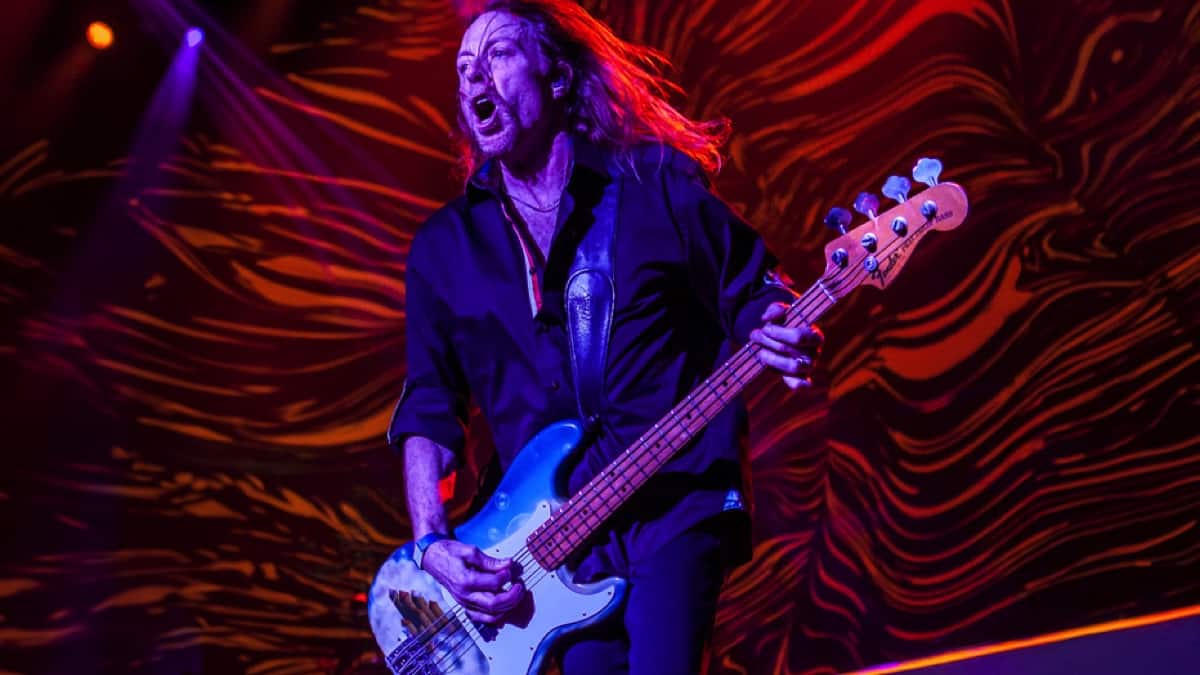
Jeff Pilson, Foreigner Low End – January 2024…

Those of us who were around back in the 70’s remember how certain songs on the radio resonated with us. It turns out that many of these iconic melodies came from Foreigner and they were part of our personal soundtracks!
After all these years, the band is going as strong as ever with Jeff Pilson firing away on bass midstream into a 2-year farewell tour.
I am excited to be able to bring you all the details about Jeff’s musical Journey, the farewell tour in progress, how he gets his sound and his plans for the future.
Cover Photo: Krishta Abruzziini / Video Photos: Krishta Abruzzini, Karsten Staiger, Gina Hyams
Featured Videos
For more news on FOREIGNER and upcoming Farewell Tour dates, fans can visit:
foreigneronline.com
facebook.com/Foreigner
twitter.com/ForeignerMusic
instagram.com/foreignerlive
youtube.com/user/FWebTeam
Also on FB @officialjeffpilson
Bass Videos
Rodney O’Quinn, Rockin’ Hard Through the Years – December 2023
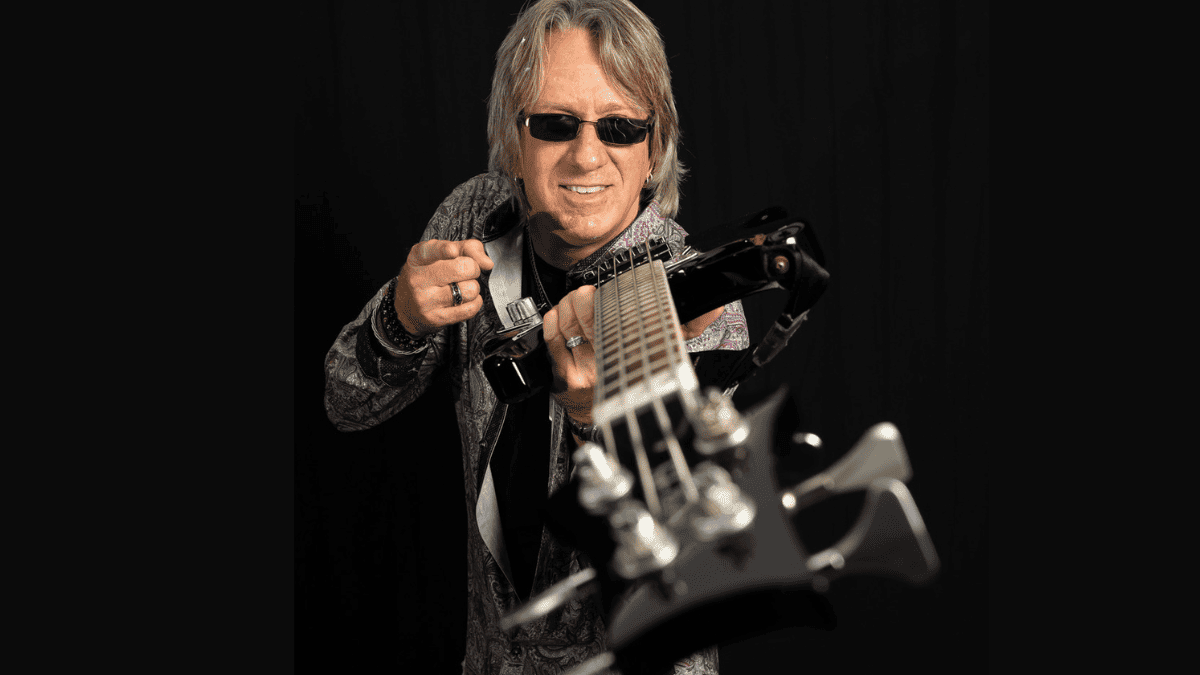
Interview With Foghat Bassist Rodney O’Quinn…

Many rock fans have enjoyed music by Foghat, who originally formed in London back in 1971.
Over the many decades of playing, the band members have changed, leaving behind only Roger Earl as the only original member. Bassist Rodney O’Quinn left the Pat Travers Band and joined the group in 2015 and has been laying down the low end for this iconic quartet keeping the Foghat legacy alive. With a new album titled “Sonic Mojo” which dropped on November 10th, the band is as busy as ever and there is lots of very tasty music to come.
Join me as we learn of Rodney O’Quinn’s musical journey, how he gets his sound, and his plans for the future.
Photos:
Cover, Jake Coughlin
Video Thumbnail, Tom Apathy
Photos used in the video: Kerry Quinn, Chuck Lanza, Kim Granger, Kenneth Strohm, Jake Coughlin, Jay Jylika
Featured Videos:
1st Single from Sonic Mojo – Official “Drivin’ On”
2nd Single from Sonic Mojo – “She’s a Little Bit of Everything Official Video
“Road Fever”- California Mid State Fair – Paso Robles, CA – 7-27-22
“Stone Blue” – Rodney O’Quinn Bass/Lead Vocals – Don Odell’s Legends – Woonsocket, R.I – 10/15/22 – The Stadium Theater
The Earl’s Court – Season 2, Episode 7: Funny Guys
“I Just Want to Make Love to You” – CasinoRama – 6-9-23
FOGHAT “Somebody’s Been Sleepin’ in My Bed” – Mohegan Sun, Uncasville, CT – 1/28/22
“I Just Want to Make Love to You” – California Mid State Fair – Paso Robles, CA – 7-27-22
Visit Online:
www.foghat.com
www.facebook.com/Foghat
www.twitter.com/FOGHAT
www.instagram.com/foghat_official
www.youtube.com/user/FOGHATMUSIC




















